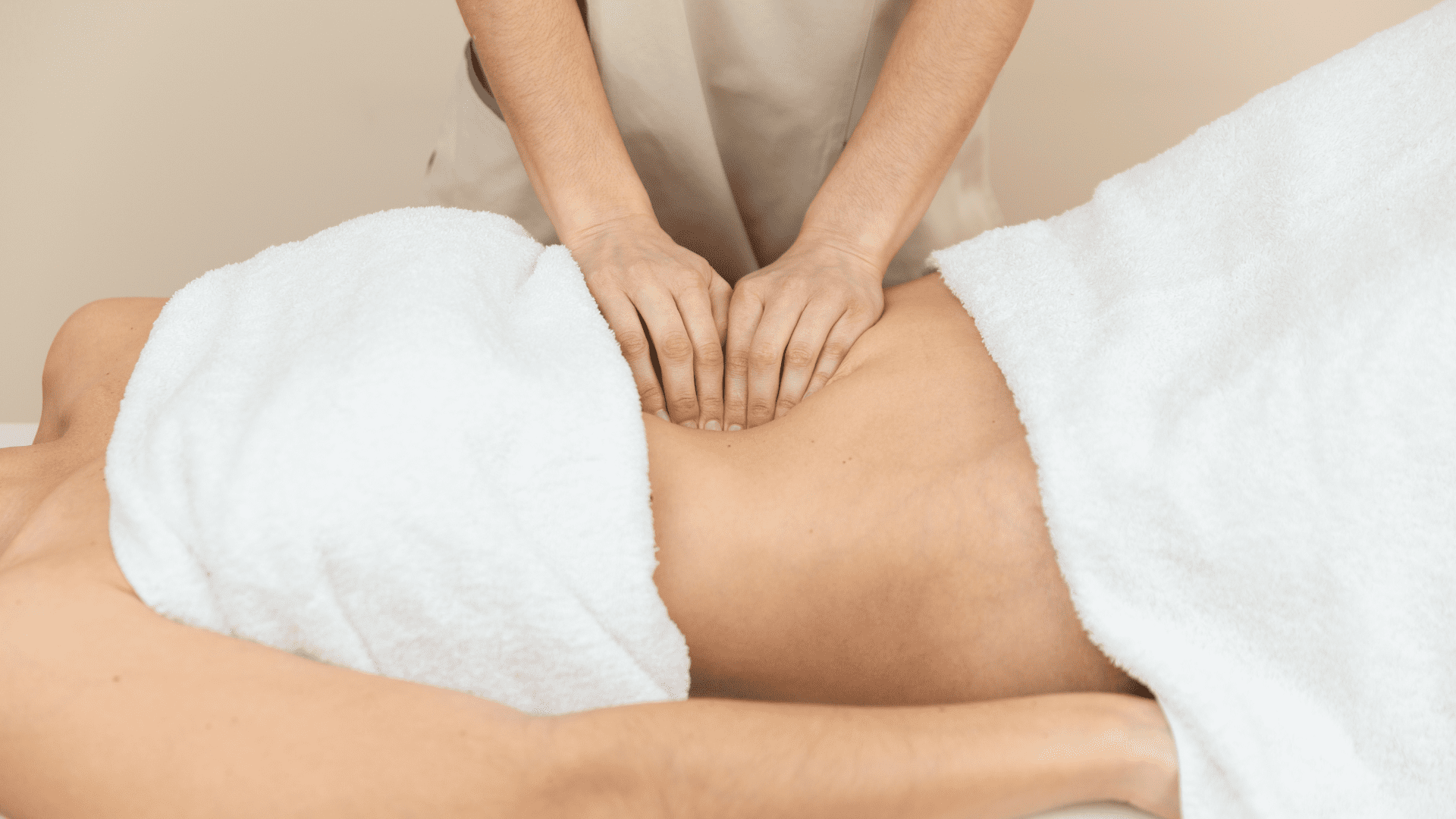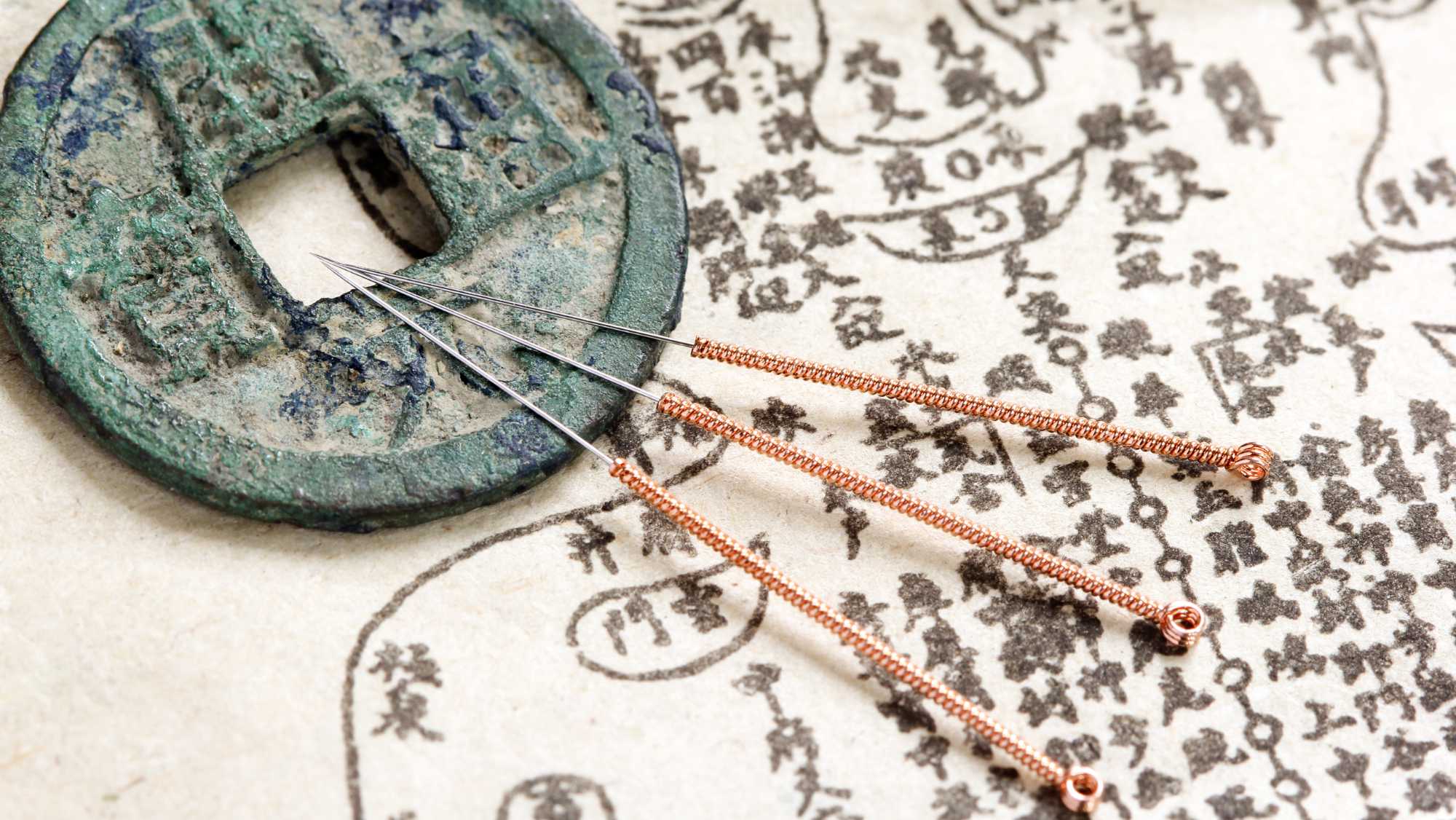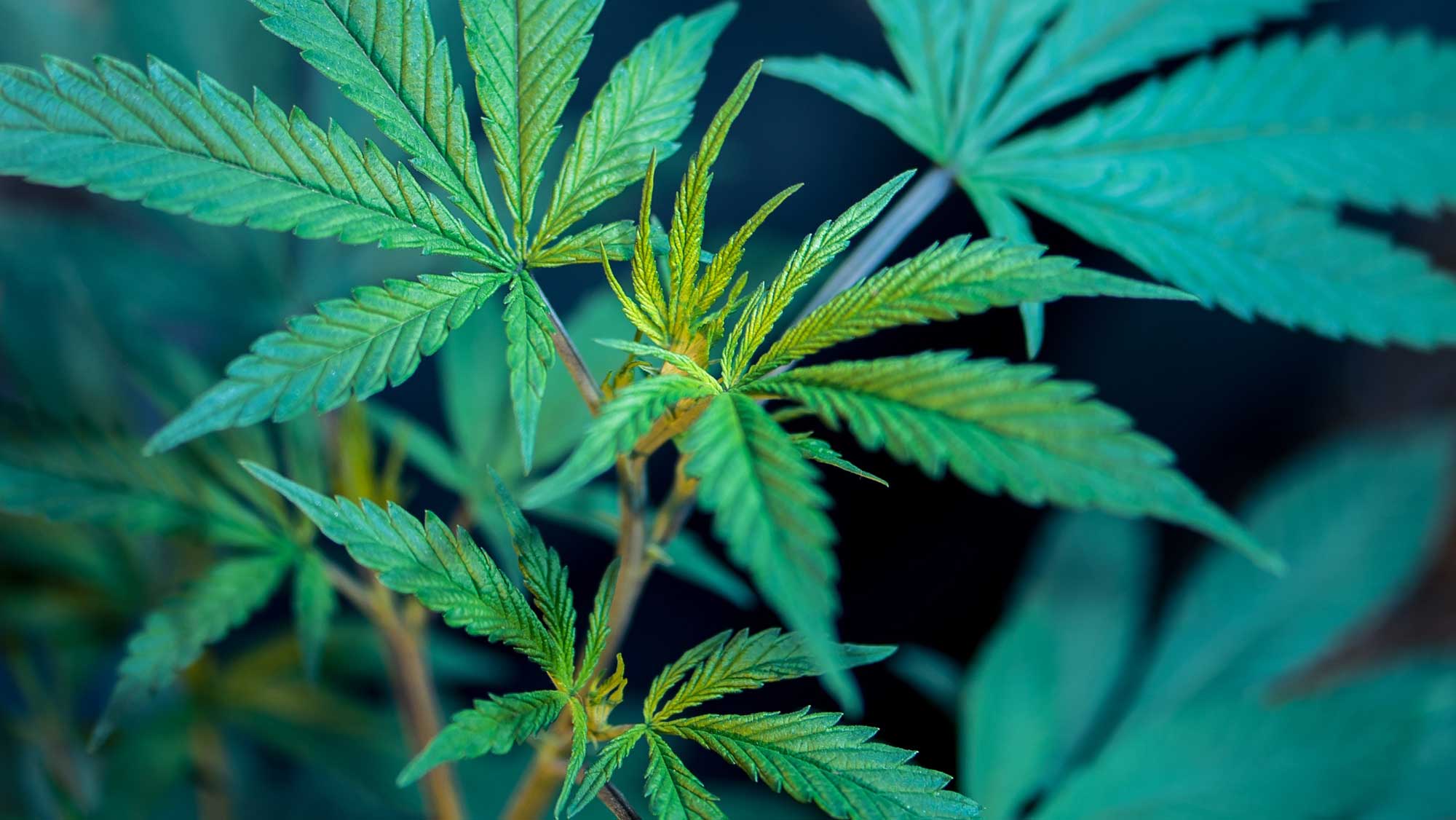One of the most common reasons patients come to see us is for pain relief. Acupuncture is extremely effective for many patients in both relieving physical pain, sometimes immediately after insertion of the needles, and also at helping patients remain pain-free on an ongoing basis over the course of many acupuncture treatments.
Acupuncture is effective—but, how does it work? Interestingly, after 15 years in the acupuncture field, I feel that I only recently learned “the truth.” A small group of acupuncture practitioners and scholars have put together a series of convincing arguments that actually turns the common understanding of acupuncture in the US and Europe on its head—more on that below.
The “truth”? Acupuncture works by using acupuncture needles to stimulate key points on the peripheral nervous system. This sends signals up the spine to the brain. Upon receiving these signals, the brain triggers a series of reactions that decrease pain, relax the muscles, increase range of motion, and increase blood flow to the painful area. Interestingly, these effects can often be felt almost immediately after the needles are inserted.
The common understanding (now being turned on its head): the invisible energy model
The common understanding of how acupuncture works throughout acupuncture schools, in the United States and Europe, centers around the concept of “energy flow” in the body. “Energy,” or “qi,” is said to be flowing through all areas of the body at all times. When there is a blockage of energy flow to a particular area of the body, that area will start to malfunction. This will manifest as some type of disease, or pain.
Acupuncture is used to influence or “balance” the flow of qi in the body. By inserting needles in at specific points in “energy meridians,” acupuncture unblocks the flow of qi, thus healing disease and pain. These energy meridians are thought of as non-physical channels, and qi or energy is a non-physical phenomena that flows through these channels. Energy flow in these channels is influenced by the acupuncture needles at specific acupuncture points.
Acupuncture students are taught the location of over 300 key acupuncture points, and the precise trajectory of the meridians that cover the body. Here is a representative chart of the meridians and acupuncture points—one which I actually had on my office wall for several years.

This non-physical “energy” model of the acupuncture meridians is why acupuncture is often referred to as “energy medicine,” not able to be understood in Western physiological terms. This is why it’s often placed in the camp of “alternative medicines.”
Physical therapy for the nervous system
As it turns out, acupuncture may very well be a thoroughly physical medicine. Indeed, it may even be possible that it was primarily understood this way in Asia from the inception of the written history of Chinese medicine, and in fact still is by Asian scholars and medical practitioners. Rather than an “energy medicine” without a physiological basis, acupuncture may be better seen as a type of physical therapy—a physical therapy for the nervous system.
A small group of western scholars and acupuncture practitioners have been advocating for this physical view of how acupuncture works, including Bob Doane, Donald Kendall, Paul Unschuld, and others. Their basic thesis is that the word “qi” was never meant to be translated as “non-physical energy.”
There are no “meridians” transporting “non-physical energy” through the body. In fact, acupuncture theory is based on a very physical understanding of the body, based on extensive physical dissection of the body, and study of the blood vessels, the blood circulation throughout the body and in particular to the major organs, the circulation of oxygen, nutrients, and immune cells through the circulatory system, and the nervous system.
Let’s unpack this physiological view of the basis of acupuncture and Chinese medicine.
A physiological understanding from a 2,000 year-old Chinese medical text
Chinese medicine, like many aspects of Asian culture, attempts to establish itself firmly in tradition. The foundational Chinese medical texts were written around 300 BC on 18 scrolls—altogether called the Huangdi Neijing Suwen and Lingshu.
These texts cover anatomy, physiology, pathology, diagnostic techniques, treatment modalities, acupuncture needle therapy and herbal medicine.
They also give evidence of extensive dissection of the human body, with measurements and weights of all the major organs, and descriptions of the routes and lengths of all the major blood vessels in the body.
Interestingly, there is strong evidence that the Chinese had discovered the fact of continuous closed circuit blood circulation pumped by the heart by the time these texts were written. By contrast, this was not “discovered” in Europe until the 1600’s—European doctors before that point in time thought that the lungs were responsible for blood circulation.
While these foundational Chinese medical texts are certainly mentioned in acupuncture schools, they are rarely thoroughly studied. If they were, most acupuncture students may have developed a more keen appreciation for physiology and the physicality of Chinese medical thinking.
In the words of Dr. Donald Kendall, an acupuncturist and adjunct professor of physiology at UCLA:
Most of the basic ideas of physiology and medicine are contained in this incredible text; it provides surprisingly accurate and detailed information on the human body, with some of the ideas clearly equivalent to those of modern Western physiology.
—Donald Kendall, O.M.D., L.Ac.
If this is true, why is there such a different understanding of the body promoted in Western acupuncture schools?
“Qi as energy”: a problem of translation
There were three main Western translators of the Suwen and Lingshu.
- Dr. Willem ten Rhijne (1683)
- Georges Soulie de Morant (1939)
- Ilza Veith (1949)
While Dr. Rhijne and Ilza Veith did convey the more traditional physical understanding of Chinese medicine, de Morant translated qi as “energy,” and jing mai as “meridians.”
This introduced the idea of non-physical energy being conducted through the body by non-physical energy channels called meridians. Although mistranslations, these are the central concepts that stuck as Chinese medicine was transmitted to the West.
If qi is not energy, what is the best translation? Qi, when used in a medical sense, can be translated as “air, breath, vapor, steam, gas, weather, manner, demeanor, temper, force, vital substance (usually a vital substance in the blood such as nutrients, immune cells, hormones, and oxygen), and the function of something.”
If jing mai are not meridians, what is the best translation? Jing mai are the major longitudinal blood vessels of the body.
A picture begins to form here. Qi refers to the nutrients, immune cells, hormones, and oxygen contained in the blood, which is distributed throughout the body through the jing mai, or blood vessels, helping power the body’s many processes and functions (qi), both physical and temperamental / emotional / mental.
The Chinese view of health: the importance of blood circulation
Highly oxygenated, highly nutritious blood coursing through the body is the key to good health.—Bob Doane, L.Ac
According to Bob Doane, the Chinese view of health can be summarized in four aspects. The four aspects of a body that need to be functioning well in order to be healthy are:
- Oxygen delivery to the body tissues
- Vascular system
- Organ system, particularly the heart
- Nervous system
Blood circulation is of primary importance to maintaining good health, as well as healing illness or pain. In fact, many experienced Chinese medical practitioners will point to “blood stagnation” as the primary or #1 cause of disease and illness. This is especially true for chronic health conditions, where dysfunctions have accumulated over time.
When blood flow to a particular area of the body is obstructed for some reason, that area will be negatively impacted. It will also make it harder for that area to heal.
Why is blood flow so important? Because it’s all in the blood:
- analgesics (the body’s naturally produced pain killers),
- hormones,
- nutrients from digestion of food,
- oxygen
- immune cells, and more.
Acupuncture treatments are designed to assure the proper flow of blood, and thus all of the healing contents of the blood, to certain areas of the body. This promotes the healing reactions that need to occur, essentially allowing the body to “heal itself.”
How does acupuncture work?
The peripheral nervous system can be stimulated by acupuncture to increase blood flow to targeted areas in the body.—Bob Doane, L.Ac
If one of acupuncture’s main roles is to restore blood flow to areas of the body that need it, the question then remains: how does it work? And in particular, how does it work for pain?
The short answer: through the nervous system.
By inserting acupuncture needles into specific sites on the body (acupuncture points), the needles trigger a response from the nervous system. In fact, in Chinese, acupuncture points are called nodes (jie). These nodes are actually little gatherings of nerves, venules and arterioles. They are spaced out along the branches of the nervous system. By stimulating these concentrated areas of nerves with a needle, signals are sent through the nervous system.
How does pain work?
The feeling of pain is reported to the brain via sensory nerves (nociceptors). These sensory nerves register the feeling of the pain—“ouch”!
There are A Delta fiber sensory nerves that register sharp, burning pain, and C fiber nerves that register dull, throbbing pain.
The location of the pain is reported to the brain via proprioceptive nerves. These nerves tell the brain where the “ouch” is at.
When a physical injury occurs, the body is designed to heal itself in 2 stages. The first stage involves protecting the injured area, as well as the rest of the body, through the following mechanisms:
- The nerves send pain signals, to alert you that there is a problem in that area.
- The brain creates a guarding reflex in the muscles around that area, to make sure it’s harder to move so you don’t re-injure it (think soreness, or limited range of motion).
- The brain restricts blood flow to the area. In case the cause of pain is a poison of some kind, like an infection or a snake bite, the brain wants to sacrifice that area in favor of the health of the rest of the body.
After inflammation has reduced, and appropriate initial levels of healing has occurred, there is a second stage in injury healing:
- The brain releases chemicals to kill the pain in the healing area.
- The brain relaxes the guarding reflex, increasing range of motion and muscle function
- The brain dilates the blood vessels, bringing blood flow back to the healing area
The cause of chronic pain issues
This system is all well and good, except when it doesn’t work. Chronic pain issues, whether ongoing, or experienced as occasional flare-ups of a chronic problem, occur when stage 2 of the healing process doesn’t kick in.
The cause of this is most likely due to a weakness in the proprioceptive nerve signals to the brain. When the proprioceptive signals are too weak, the brain doesn’t know “where” the pain is. On an experiential level, this is when you can’t pinpoint the exact location of the pain, but you know it’s in a general area.
When the brain can’t pinpoint the exact location of the pain, it can’t execute all of the steps of stage 2 healing, which leaves you with ongoing pain.
How acupuncture helps restore the brain’s healing power
Most of the acupuncture points used for healing pain at our clinic are located on the arms and legs. The acupuncture points, or nerve nodes, on the arms and legs are part of the peripheral nervous system.
When an acupuncture needle stimulates a nerve node, this “re-boots” the proprioceptive nerve pathway. The nerve reaction created by the acupuncture needles “jumps” the neural signal threshold and stimulates the brain to release endorphins and enkephalin painkillers, as well as restore blood flow and range of motion to the painful areas.
After a period of time, anywhere between a few hours to a few days after acupuncture, the proprioceptive signal gets weak again. Then, acupuncture can be used to “re-jump” the proprioceptive nerve pathway, helping the brain to again activate the sequence of physiological reactions that heal the painful area.
Why a sequence of treatments is needed—re-educating the nervous system
Acupuncture treatment plans are similar to physical therapy treatment plans, where a patient will start by coming in 2–3 times per week, and gradually reducing treatment frequency until the patient’s improvements have stabilized. While physical therapy will focus on retraining the muscles, by stretching, strengthening, and more, acupuncture is essentially a physical therapy for the nervous system.
Acupuncture is delivered on an ongoing basis, helping to “re-jump” the proprioceptive nerve pathways, until the body remembers, and re-establishes the normal functioning of these pathways. This results in the sustained experience of reduced or eliminated pain, increased range of motion, and increased blood flow to the area.
The acupuncturist—conductor of blood flow throughout the body
Coming back full circle to the importance of blood flow to health, we can see how acupuncture works to actually “cure” a painful body area in a deep and thorough way.
By jumping the proprioceptive nerve signals, the brain releases painkillers into the bloodstream. When the brain dilates the blood vessels to the damaged area, the painkillers, along with nutrients, oxygen, and other vital substances can suffuse the area, providing their healing benefits and functions.
With increased blood flow to the area happening on a consistent basis as a result of the acupuncture, patients can actually experience a fundamental and long-lasting healing of pain issues. Issues that sometimes weren’t able to be fully healed by other modalities. This is because our treatment plans are divided into “relief” and “stabilization” phases.
The first set of acupuncture treatments are meant to provide relief from pain, but we have to treat beyond relief to get that relief to hold.
We continue to treat until we stabilize at a pain-free state—but that’s not all. We are aiming for a state of strong health. Acupuncture’s ability to not only take away pain, but also to balance the functioning of the central nervous system (therefore assisting with digestive, circulatory, and mental/emotional issues) will be the subject of a forthcoming article.







